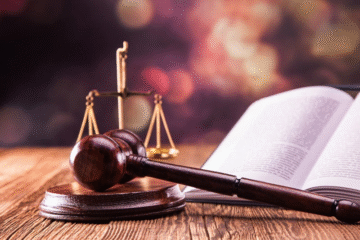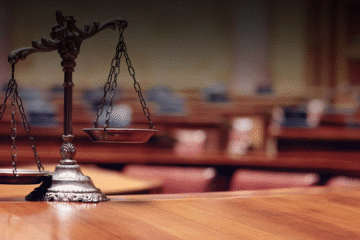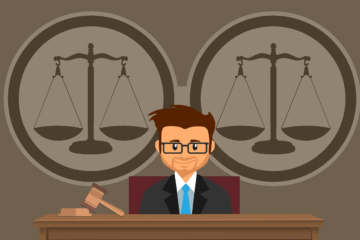
This article is written by Gargi Nagpal of 4th Semester of Alliance University, Bengaluru
ABSTRACT
The entire juvenile system is founded on the idea that children’s deviance results from society’s failure to provide a nurturing environment that enriches them with care and protection, highlighting the need for a socially acceptable and child-friendly approach to juvenile deviance correction. Section 15 of the JJB Act places a onerous burden on the JJB to enlist the help of psycho-social workers, psychologists and other experts in order to determine the mental capacity of accused. However, Section 15 of the Act has drawn criticism for being counterproductive to the stated goal, which has made it questionable. This research paper aims to lay emphasis specifically on Section 15 of the Juvenile Justice Board Act and bring forward its functioning.
Keywords: Juvenile system, Preliminary assessment, Two-tier process, Mechanism, Heinous offences.
INTRODUCTION
It is evident from the data of the recent years that there has been a rampant increase in rate of crimes throughout the country which means safeguarding the security of individuals is of utmost importance today. In order to make people feel safe, several laws are enacted, one of which was passed in 1986 as the Juvenile Justice Act, and it was subsequently changed from time to time in accordance with the aforementioned natural phenomenon of change to become the Juvenile Justice (Care and Protection) Act, 2000, and Juvenile Justice Act, 2015. Juveniles who are in trouble with the law and commit heinous crimes can now be tried as adults, thanks to the Juvenile Justice Act of 2015 which replaced the Act enforced in 2000 i.e., Juvenile Justice (Care and Protection of Children). Whether juveniles should be tried as adults is a contentious issue. Some contend that the current legal system is ineffective in preventing juveniles from committing heinous crimes. When it came to alleging and declaring a child offender responsible for their deeds, the Juvenile Justice Act of 2000 used to take a call very leniently. The Nirbhaya Rape Case of 2012 served as the impetus for the Indian Parliament’s hasty enactment of the Juvenile Justice Act, 2015 in response to mounting public scrutiny and tensions. However, this Act is not at all lenient; rather, it has a dissuasive purpose. According to Section 15 of the Act, any minor between the ages of 16 and 18 may be brought before a criminal court for the commission of a heinous offense, which is defined in Section 2(33) of the same Act.
SECTION 15: PRELIMINARY ASSESSMENT EVALUATION
In order to presume a juvenile “as an adult” by using legal fiction, Section 15 of the said Act provides a mechanism for determining the mental and physical capacity of a juvenile of such age regarding the commission of the offenses and their consequences. In actuality, the juvenile need not be an adult. However, such a juvenile will be treated as an adult in legal terms. It is crucial that the aforementioned investigation is carried out in accordance with the law’s provisions in both letter and spirit because it could have significant repercussions for a juvenile between the ages of 16 and 18. But in reality, it is discovered that such a legal mandate for carrying out such an inquiry is frequently broken with impunity. However, under Section 15 of the Act, a preliminary assessment inquiry must be conducted if “a child in conflict with the law” is accused of a “heinous offence” and is older than sixteen years old as of the date of the alleged offense. It has to be determined whether “the child in conflict with the law” must be tried as an adult by a Children’s Court (per Section 18(3)) or by the Board as it is the goal of the preliminary assessment test required by Section 15 of the Act. When “a child in conflict with the law” is presented to the Board in the aforementioned scenario, it is essential that the Board conduct a preliminary assessment test in accordance with Section 15 of the Act with respect to:
a. The mental and;
b. Possessing the physical ability to commit a heinous offense as defined by Section 2(33) of the Act;
c. The capacity to comprehend the repercussions of the offense;
d. The environment in which he is said to have committed the crime.
The board may consider the opinions of seasoned psychologists, psycho-social workers, or other experts in reaching this determination. In this regard, it should be noted that the Board must include two social workers and a magistrate with at least three years of experience as per Sec. 4(2). The process for the Board’s preliminary assessment into heinous offenses is outlined in Rule 10A of the aforementioned Act (Care and Protection of Children) Model Rules, 2016 which can be also called as Common Rules. According to this clause, the Board must first decide if the child is at least 16 years old. In accordance with Central Rule (2), the Board may seek the assistance of psychologists, psychosocial workers, or other experts who have experience working with children in a variety of settings in order to conduct a preliminary assessment in cases of heinous offenses.
The child shall be presumed innocent during the preliminary assessment in accordance with sub-rule (3) of the Central Rules. In cases where the board determines after a preliminary evaluation that the child should be tried as an adult, sub-rule (4) of the Central Rules states that it shall assign reasons thereof. Section 3 of the aforementioned Act may be taken into account in order to understand the aforementioned provisions. The “general principles to be followed in the administration of the said act” are listed in Section 3. A child is presumed innocent of any malicious or criminal intent, as stated in Clause (i) of Section 3. Section 3’s clause (ix) states that no waiver of a child’s rights is acceptable or valid. Clause (xvi) states that fundamental procedural fairness protections, such as the right to a fair trial and unbiased decision-making, must be upheld.
DOLI INCAPAX AND JUVENILE
The requirement that actus reus and mens rea be proven before a person can be found guilty of a crime is a fundamental tenant of criminal law. Actus reus describes a person’s behavior or act that includes a free movement of the body. The law also requires that mens rea, the mental element of the crime, be established in addition to the physical element of a crime, actus reus. Mens rea is simply the intention to commit an act that society has penalized, or the in Thus, the Indian law recognizes the well-known doctrine of doli incapax, which exonerates a child of all responsibility if the child was under the age of seven at the time of the crime. The complete release of liability for this age group of children is based on solid wisdom and experience, and no change is necessary to grant the privilege to a younger age group. tention to commit an act knowing that doing so will result in a criminal offense.
CASE LAWS:
- Gangajali Education Society v. Union of India
Therefore, it is clear that the preliminary assessment test is a required step that must be followed by a Board when a child is presented to it in the circumstances as described above. In order for the Board to reach an independent decision—of course with the help of expert opinion—it is imperative that the procedure outlined in Section 15 read in conjunction with Rule 10A of the Central Rules be adhered to scrupulously and religiously. The key is that the Board alone must formulate the opinion; everyone else must abstain. The Board is unable to neglect its crucial judicial duty. It is common knowledge that no decision-making authority may cede its authority to another authority. [1]
- Gopal & Sons (HUF) v. CIT
A juvenile between the ages of 16 and 18 is given a different legal character by an order made under Section 15 of the Act, which presumes that the juvenile is an adult in the eyes of the law and removes the application of the advantageous provisions listed under Section 18(1) and (2) of the Act. It ultimately decides the venue for the trial, the trial process, and the punishment that may be imposed if the aforementioned juvenile is found guilty. The Act’s Section 15 provision must be strictly interpreted because it deals with a legal fiction (see Section 18(3)). It has been established far too often that deeming provisions require strict interpretation[2].
- Shilpa Mittal v. State of NCT of Delhi and Others
The significance of this provision was recently highlighted by the Hon’ble Supreme Court of India, which held in, The Children’s Court established under the Act of 2015 has to determine whether there is actually any need for the child to be tried as an adult under the provisions of Crpc and pass appropriate orders in this regard. The special needs of the child, the principles of a fair trial, and maintaining a child-friendly environment should all be taken into account by the Children’s Court. The court may decide that the child does not need to be tried as an adult. Even if the Children’s Court rules that the child must be tried as an adult, it must make sure that the final judgment contains an individual care plan for the child’s rehabilitation as per Subsection (2) of Section 19. Furthermore, even if the child must be tried as an adult, under Sub-section (3) such a child must be kept in a place of safety and cannot be sent to jail until the child reaches the age of 21. The child is also given reformative services, educational services, skill development, alternative therapy, counselling, behaviour modification, and psychiatric support during the time they are kept in the place of safety, even though they may be tried as adults[3].
- Mumtaz Ahmed Nasir Khan and Others v. State of Maharashtra and Others, As allowed by Section 15, the Board is allowed to enlist the aid of seasoned psychologists, psychosocial workers, or other experts during the preliminary assessment. First off, the initial evaluation is “not a trial.” Second, it is an assessment of the child’s capacity to commit the alleged crime and comprehend its repercussions[4]. The Board must confirm its initial conclusions about the juvenile’s mental and physical ability, his capacity to comprehend the repercussions of the offense, and other factors after conducting inquiries. Following that, the Board will “follow the procedure, as far as is possible, for trial in summons case under Crpc,” if it is “satisfied on preliminary assessment that the matter should be disposed of.”
CONCLUSION
It is important to realize that a child differs from an adult in that he or she is still developing and becoming an adult. A person treats two unequals as equal when they anticipate a child to have the same comprehension as adults. As a result, section 15 of the JJA’s classification of juveniles lacks discernible differences and thus violates Article 14 of the Indian Constitution. Understanding human nature or human psychology is crucial when dealing with criminal cases in order to determine why a particular person committed a particular offense. Instead of rehabilitating juveniles, the JJA primarily focuses on handling them. As a result, it has completely abandoned its original plan to reform children, which was the Juvenile Justice Act of 2000’s main objective. The government decided to focus on public opinion instead of creating regulations that would ensure children’s development, and as a result, the rules in this section were born. In order to reduce recidivism and adequately meet the needs of the children, the government should do away with the division of age groups between 16 and 18 years and instead concentrate on enhancing the facilities of the rehabilitation facilities. The State should be forbidden from letting its own flawed system cause it to lose its own asset, in this case the child.
REFERENCES
- https://www.legalserviceindia.com/legal/article-6232-the-need-to-reassess-section-15-of-the-juvenile-justice-care-protection-act-2015.html#:~:text=Section%2015%20of%20the%20JJA,other%20is%20above%20this%20age
- https://devgan.in/jja/section/15/
- https://lawgist.in/juvenile-justice-care-and-protection-of-children-act/15
- https://www.lawfinderlive.com/Articles1/Article93.htm?AspxAutoDetectCookieSupport=1
[1] Gangajali Education Society v. Union of India, AIR (2017)
[2] Gopal and Sons v. CIT, AIR (2017) 3 SCC 574
[3] Shilpa Mittal v. State of NCT of Delhi & ors., AIR (2020) SC 405
[4] Mumtaz Ahmed Nasir Khan v. State of Maharashtra AIR 2019 (4) Bom CR (Cri) 261




0 Comments